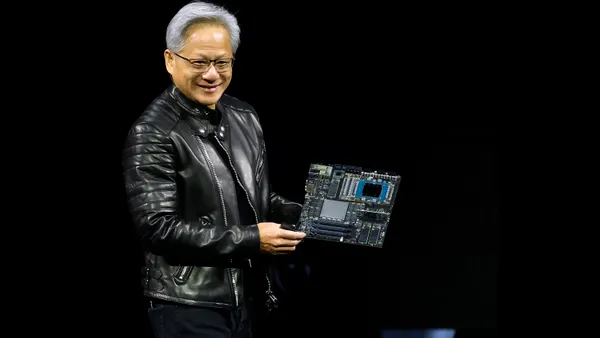Dive Brief:
- President Donald Trump signed the American AI Initiative on Monday, an executive order prioritizing the development and deployment of artificial intelligence technologies in the United States. The order elevates the priority of AI R&D in federal agencies and calls for reallocation of research investment into the technology.
- The National Science and Technology Council (NSTC) Select Committee on Artificial Intelligence will oversee the initiative. The administration also called upon regulatory agencies and other stakeholders such as NIST to create guidance and standards for AI technologies. Federal agencies were tasked with improving access to federal data, models and computing resources for AI research and development.
- The administration affirmed the importance of AI for national competitiveness and security, but also acknowledged the impact it will have on America's workers, calling for greater education and training of a workforce capable of using AI.
As co-chair of the @AICaucus, I'm encouraged that @POTUS is recognizing AI’s impact through the American AI Initiative. Investing heavily into AI is an investment in our national security, global competitiveness & the future of our country. Read my full statement ↓ pic.twitter.com/e255c10HiQ
— Rep. Pete Olson (@RepPeteOlson) February 11, 2019
Dive Insight:
In addition to the economic advantages that artificial intelligence offers, the Trump administration recognized the friction the technology could cause with job disruption and unintended social consequences. The executive order mentioned public trust, public confidence and civil liberties 14 times.
The order highlighted five principles for a coordinated national strategy:
- Driving technology breakthroughs across domains for discovery, competitiveness and national security.
- Developing standards and reducing barriers to adoption.
- Boosting workforce training and education for new technology jobs.
- Promoting trust, privacy and civil liberties in AI applications.
- Creating a supportive international environment for American AI industries.
On the final principle, the order explained that the administration wants to create an international environment that supports American AI endeavors and creates open markets for AI industries — fostering competitiveness while protecting technologies "from acquisition by strategic competitors and adversarial nations." The latter is a nod to the intellectual property theft allegations the administration cited in its tariff battle with China.
Though China was not mentioned once, it loomed large over the executive order. The two countries are still in the midst of trade talks, with the March 2 deadline for tariff rate hikes looming.
China is currently the strong No. 2 in the global AI race, and with massive state resources flowing to high tech industries through its "Made in China 2025" plan, it is America's greatest competitor.
The administration set off worries in Silicon Valley last year when the Commerce Department listed AI technologies as another potential export under future tariffs with China. Many experts feared that blocking AI exports would harm America's competitiveness.
While it will be months before subsequent guidance on AI technology is released, many experts are applauding the administration's major step in prioritizing AI across the government.
"It's great to see the Administration honing in on an AI strategy that recognizes the importance of federal R&D, promotes access to government data, and seeks to prepare the American workforce for the jobs of the future," Christian Troncoso, director of policy at BSA | The Software Alliance, told CIO Dive. "We look forward to partnering with OSTP, the Select Committee on AI and OMB as they develop work plans around each of these important initiatives."
Industry and academia have long called for open data policies as well as a more concerted national effort in light of China's state-supported tech industry.
The initiative "will help U.S. firms maintain their global advantage," but the administration needs to take some subsequent steps to make the initiative truly transformative, Daniel Castro, VP at the Information Technology and Innovation Foundation, wrote in a statement.
One area the executive order might fall short for some experts is its lack of new funding for AI technology. The order asks agencies to adjust budgets to meet the greater focus on AI in the coming fiscal year.
"It will need to do more than reprogram existing funds for AI research, skill development, and infrastructure development," he said. The administration should request more funding from Congress to expand efforts, implement a light touch regulatory scheme, expand AI adoption within the government, and avoid roadblocks such as AI export restrictions.













